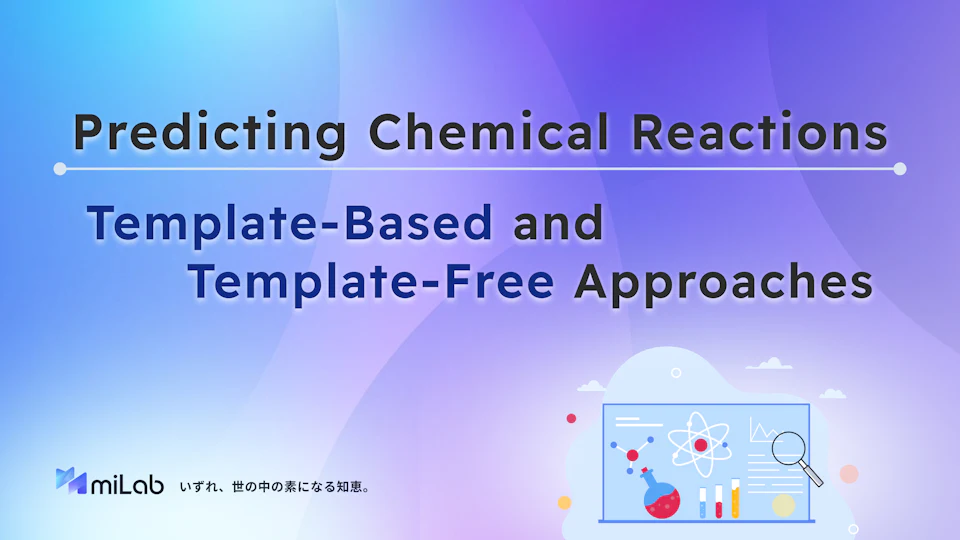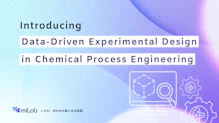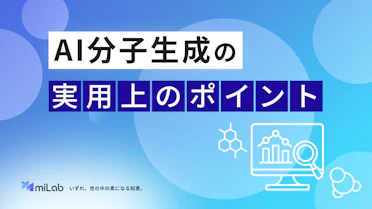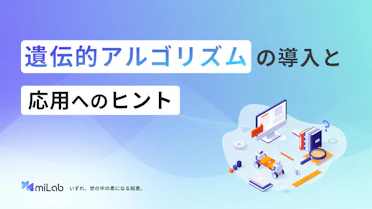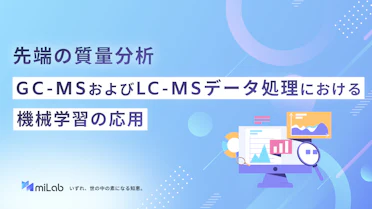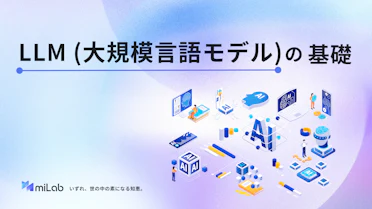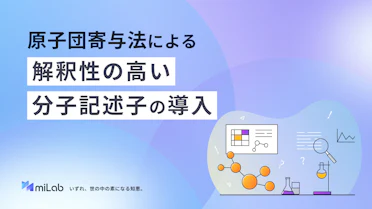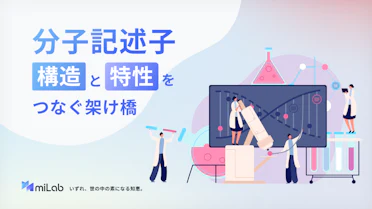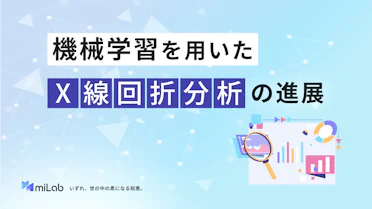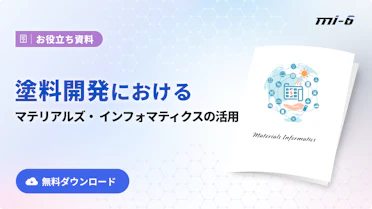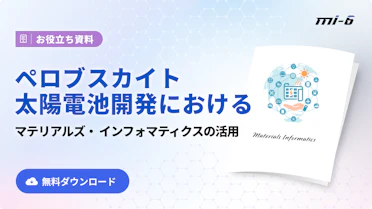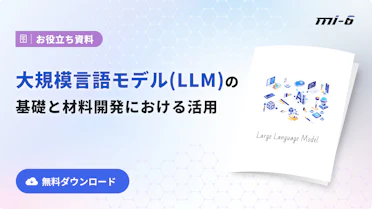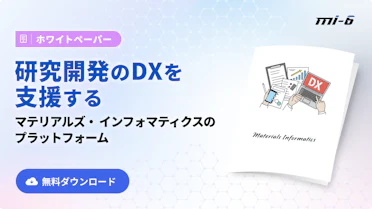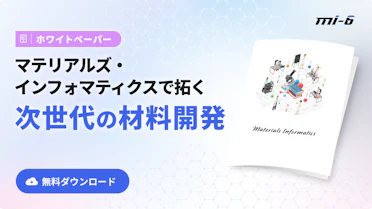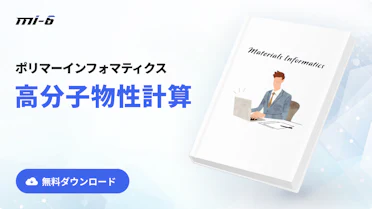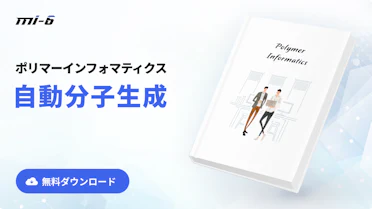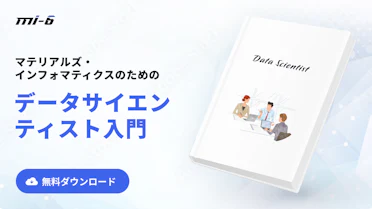Advancements in AI-Based Chemical Reaction Prediction
Chemical reaction prediction is the process of forecasting the products of a chemical reaction based on given reactants and conditions. Chemists working in fields such as materials synthesis, drug discovery, and electronics have long relied on experience and empirical rules for designing organic compounds. In recent years, significant advancements in computational chemistry, data science, and artificial intelligence have improved the accuracy of predicting reaction outcomes, mechanisms, optimal conditions, and yields, thereby greatly enhancing the efficiency and precision of organic synthesis.
The history of using computers and algorithms to predict chemical reactions and synthesis routes is long-standing. Research utilizing expert systems—developed in the early days of artificial intelligence—dates back to the 1970s. Since then, there have been various developments in chemical reaction prediction, culminating in the current generation of generative AI. In this article, the focus will be on the presence or absence of reaction templates.
Reaction Templates and Chemical Reaction Prediction
Chemical reaction prediction methods are broadly categorized into template-based and template-free approaches (Fig. 1). In this context, a template (or reaction template) refers to a framework that generalizes specific reaction patterns or rules. For instance, templates can be defined for particular patterns of bond formation or cleavage between functional groups, or for the general progression of oxidation-reduction reactions. Template-based prediction relies on predefined reaction patterns or rules—essentially a rule-based approach—to determine reaction outcomes.
In contrast, template-free prediction is a learning-based method where machine learning models directly learn reaction patterns from large datasets, eliminating the need for predefined templates. This is a data-driven approach. Additionally, there exists an approach that comprehensively calculates the transition state energies of feasible reaction pathways. However, due to the enormous computational cost required for calculating reaction energy barriers and the high model dependency—which demands deep expertise in model selection—its scalability is limited. Recent research in reaction prediction has increasingly focused on more scalable, data-driven strategies, driven by technological advancements, improved computational resources, and lower barriers to utilization.
Furthermore, similar rule-based and learning-based approaches are applied to computer-aided molecular generation. Reading the following article will further deepen your understanding of these topics.

Fig.1 Schematic representation of the chemical reaction prediction process with two approaches: template based and template free
Template-Based Prediction
Overview of Template-Based Models
In template-based prediction, predefined reaction templates—general representations of chemical reactions—are used to determine reaction outcomes. Chemists often play a crucial role in selecting the appropriate template, as an understanding of reaction mechanisms and chemistry is preferable. Once a reaction is categorized into a predefined template, the model applies specific rules, such as bond formation or cleavage, functional group transformations, and oxidation state changes, to predict the most likely products. Fig. 2 shows a comparison of the extracted reaction templates using different tools for a given reaction.

Fig.2 Example of an original reaction record, and different extracted templates.
Detailed records of specific chemical reactions serve as the basis for reaction templates. These consist of comprehensive reaction data that includes information such as reactants, products, and reaction conditions. The method of extracting reaction templates from this data varies depending on the approach and tools used. For example, RDChiral features template extraction that accounts for stereochemistry, AutoTemplate extracts general reaction transformation rules while automatically detecting information errors in reaction databases, and LocalRetro represents a semi-template approach using deep learning, which automatically identifies the reaction center and extracts templates at the atom and bond level.
Advantages, Challenges, and Prospects of Template-Based Models
Template-based models are methods that have been researched and developed over many years, offering many advantages for chemists.
- Reliability in Known Reactions
Because these models use patterns extracted from actual chemical reactions, their reliability is well-established. When the correct template is selected, the predictions exhibit high accuracy. - High Interpretability with Strong Predictive Basis
The reaction mechanisms and changes are clearly delineated, making the prediction results easy to understand. This transparency allows chemists to comprehend and verify the underlying rationale of the predictions. - High Computational Efficiency and Practicality
Established templates for well-known reactions enable fast evaluation, which helps in efficiently constructing effective synthetic routes for target molecules.
On the other hand, the inherent limitations of a rule-based framework present challenges.
- Dependency on Expert Knowledge and Dataset Quality
Selecting appropriate templates requires the expertise of skilled chemists. Moreover, the predictive performance is heavily reliant on the comprehensiveness and diversity of the template dataset. As new reactions and improved methodologies are continually reported, frequent updates and expansions of the template library become necessary. However, manual extraction by experts often becomes a bottleneck in terms of time and effort. - Difficulty in Addressing Novel or Rare Reactions
Since the models are limited to known templates, they struggle to predict outcomes for novel or rare chemical reactions.
A potential improvement approach to address these challenges is the semi-template method that leverages deep learning, such as LocalRetro mentioned above. In the semi-template approach, regions within a molecule that are highly likely to undergo chemical change (reaction centers) are extracted. The molecule is then segmented starting from these centers to generate virtual intermediates (synthons). By matching these generated intermediates against a reaction database, it becomes possible to infer potential starting materials. This method enables the flexible prediction of unknown reaction patterns or rare reactions without relying solely on the reactions or templates explicitly recorded in the database.
Furthermore, a highly anticipated approach in recent years is the enhancement of reaction databases and templates through automatic data extraction using large language models (LLMs). Although the automatic extraction of reaction templates from reaction databases has been explored for some time, the volume of information within these databases has remained a bottleneck. With the advent of LLMs, it is now becoming feasible to automatically incorporate knowledge beyond the existing databases. Specifically, by harnessing the natural language processing capabilities of LLMs, researchers are attempting to automatically extract reaction information, symbols, and conditions described in chemical literature. LLMs can learn subtle expressions and context-dependent details from a vast corpus of documents—such as chemical papers, patents, and review articles—that conventional rule-based methods might overlook. Consequently, they have the potential to automatically extract novel reaction templates that are not included in existing databases, thereby expanding the knowledge base.
For instance, there are reported approaches where the textual descriptions from literature are used as input to train LLMs, which then automatically organize the reaction conditions, involved functional groups, and transformation patterns into rules or templates. This method allows for the incorporation of a much broader range of reaction information compared to manual template design. In this way, by flexibly covering new reaction reports not present in existing databases, the utility of conventional template-based models is significantly enhanced.
Relatedly, the following article explains the extraction and summarization of information from research papers using LLMs.
Template-Free Prediction
Overview of Template-Free Models
Template-free, or template-less, reaction prediction employs deep learning models such as Graph Neural Networks (GNNs) and Transformers to directly learn reaction patterns from large datasets without relying on explicit reaction rules (see Fig 3). Provided that the data is sufficiently large and high-quality, this approach has the potential to predict novel reactions. The diversity and frequency of the dataset greatly impact the accuracy of the predicted products, making the quality of the dataset extremely important.

Fig.3 Overview of reaction product prediction with template-free methods.
Deep Learning Architectures
- GNNs represent molecules as graphs, where nodes represent atoms and edges represent bonds. This allows the model to learn relationships between atoms and predict reaction outcomes based on these relationships.
- Transformers are attention-based models. They use a mechanism called "attention" to weigh the importance of different parts of the input data when making predictions. This allows them to capture long-range dependencies (i.e., the relationships between parts of a molecule that are far apart from each other in its structure). Transformers are effective in understanding the context of reactions and predicting complex transformations. Transformers are also the main architecture used in large language models, as illustrated in the article below.
Common Datasets
- USPTO: The United States Patent and Trademark Office dataset is a widely used public dataset for chemical reaction prediction, containing a vast number of chemical reactions extracted from patents.
- Reaxys: Reaxys is a comprehensive commercial database of chemical reactions and properties.
Performance Metrics
Model performance is often evaluated using metrics such as:
- Top-K Accuracy: Measures whether the correct product is among the top K predicted products.
- Reaction Accuracy: Measures the percentage of reactions for which the model predicts the exact correct product.
Advantages, Challenges, and Prospects of Template-Free Methods
In data-driven chemical reaction prediction using machine learning, there are mainly the following advantages:
- Capability to Predict Novel Reactions
Because it does not rely on predefined templates, this approach can be applied to unknown reactions and complex chemical spaces, making it useful for exploring new reaction pathways. - Applicability Across a Wide Range of Chemical Fields
By learning from large-scale datasets, the model can comprehensively acquire various chemical reaction patterns without being limited to specific reaction categories. - Continuous Model Improvement
The accuracy of predictions is expected to improve as more data becomes available, and by utilizing transfer learning and data augmentation, the model's adaptability can be enhanced even for small datasets.
On the other hand, compared to template-based models, the following two points are particularly challenging:
- Data Dependency and Computational Cost
High-accuracy predictions require large and diverse datasets, and small datasets may not yield sufficient accuracy. Additionally, both training and inference incur significant computational costs. - Low Interpretability and Reliability
As deep learning models often function as black boxes, it is frequently difficult for chemists to understand the basis for the prediction results. Even with high model accuracy, this lack of interpretability can create obstacles in trusting the outcomes.
To overcome these challenges, the following approaches are being attempted:
- Data Augmentation: Enhancing the model's learning effectiveness by transforming and expanding existing data.
- Transfer Learning: Applying models pre-trained on large, related datasets to specific tasks, thereby achieving high accuracy even with limited data.
- Interpretable Modeling: Utilizing learning techniques such as attention mechanisms to identify reaction centers and leaving groups, visualizing input contributions through post-processing methods like SHAP (Shapley Additive Explanations), and improving interpretability via knowledge distillation. Moreover, training models to learn editing operations of atoms and bonds, and performing step-by-step reaction prediction through intermediates, can further enhance chemists' understanding of reaction mechanisms.
Approach Selection
As described above, both template-based and template-free methods have distinct characteristics in chemical reaction prediction. Template-based approaches exhibit high accuracy and interpretability for known reactions; however, they depend on expert knowledge and predefined rules. In contrast, deep learning-based template-free methods show promising results in predicting unknown reactions and generalizing across diverse chemical fields, although they require extensive datasets and may sometimes lack interpretability. Recently, hybrid approaches such as semi-template methods have emerged that leverage the strengths of templates while capitalizing on the expressive power of deep learning.
The choice of approach depends on the specific circumstances and objectives of the prediction task. For reactions based on known templates, template-based methods tend to be preferred due to their accuracy and interpretability. However, when exploring unknown reactions or dealing with complex chemical spaces, template-free methods become a compelling option. The following table summarizes the characteristics of each approach along with their associated challenges for your reference.
Method | Features | Challenges |
|---|---|---|
Template-based | High accuracy if the correct template is selected. | Requires expert chemist input to select appropriate templates. |
Well-suited for common and well-studied reactions. | Limited to known reaction templates, making it ineffective for novel or rare reactions. | |
Provides interpretability by following predefined reaction rules. | Highly dependent on the availability and diversity of the reaction template dataset. | |
Efficient for retrosynthesis route planning. | Cannot generalize beyond the predefined templates, restricting adaptability. | |
Template-free | Capable of predicting novel reactions beyond predefined rules. | Requires large and diverse datasets to achieve high accuracy. |
Uses deep learning (GNNs, Transformers) to learn reaction patterns. | Predictions can be less interpretable due to black-box nature of models. | |
Can generalize better, making it more adaptable to different chemistries. | Small datasets lead to lower accuracy and potential overfitting. | |
Methods like transfer learning and data augmentation enhance learning from limited datasets. | Computationally expensive compared to rule-based approaches. |
Conclusion
In this article, we organized the progress of AI-driven chemical reaction prediction from the perspectives of template-based, template-free, and semi-template approaches. Each approach has distinct characteristics in terms of prediction accuracy, interpretability, ability to handle novel reactions, and computational cost, and their optimal applications vary depending on the scenario.
Looking ahead, several key factors will be crucial for the further advancement of chemical reaction prediction technologies. First, the expansion and improvement of data quality remain essential. With the automatic extraction of reaction information from chemical literature and patents using large language models (LLMs), the enrichment of reaction databases is expected to enhance the accuracy of both template-based and template-free methods. Additionally, hybrid approaches—such as semi-template methods that combine the interpretability of template-based models with the flexibility of template-free approaches—are drawing attention as they can assist chemists in decision-making while covering a broader reaction space. Moving forward, by exploring new possibilities at the intersection of chemistry and AI, we aim to contribute to the development of more practical reaction prediction technologies.
References
- Segler, M. H. S.; Waller, M. P. Neural-Symbolic Machine Learning for Retrosynthesis and Reaction Prediction. Chem. A Eur. J. 2017, 23 (25), 5966–5971. https://doi.org/10.1002/chem.201605499.
- Coley, C. W.; Green, W. H.; Jensen, K. F. RDChiral: An RDKit Wrapper for Handling Stereochemistry in Retrosynthetic Template Extraction and Application. J. Chem. Inf. Model. 2019, 59 (6), 2529–2537. https://doi.org/10.1021/acs.jcim.9b00286.
- Chen, L.-Y.; Li, Y.-P. AutoTemplate: Enhancing Chemical Reaction Datasets for Machine Learning Applications in Organic Chemistry. J. Cheminformatics 2024, 16 (1), 74. https://doi.org/10.1186/s13321-024-00869-2.
- Chen, S.; Jung, Y. Deep Retrosynthetic Reaction Prediction Using Local Reactivity and Global Attention. JACS Au 2021, 1 (10), 1612–1620. https://doi.org/10.1021/jacsau.1c00246.
- Tran, T.; Ekenna, C. Molecular Descriptors Property Prediction Using Transformer-Based Approach. Int. J. Mol. Sci. 2023, 24 (15), 11948. https://doi.org/10.3390/ijms241511948.
- Schwaller, P.; Laino, T.; Gaudin, T.; Bolgar, P.; Hunter, C. A.; Bekas, C.; Lee, A. A. Molecular Transformer: A Model for Uncertainty-Calibrated Chemical Reaction Prediction. ACS Cent. Sci. 2019, 5 (9), 1572–1583. https://doi.org/10.1021/acscentsci.9b00576.
- Saebi, M.; Nan, B.; Herr, J.; Wahlers, J.; Wiest, O.; Chawla, N. Graph Neural Networks for Predicting Chemical Reaction Performance. 2021. https://doi.org/10.26434/chemrxiv.14589498.v1.
- Coley, C. W.; Jin, W.; Rogers, L.; Jamison, T. F.; Jaakkola, T. S.; Green, W. H.; Barzilay, R.; Jensen, K. F. A Graph-Convolutional Neural Network Model for the Prediction of Chemical Reactivity. Chem. Sci. 2018, 10 (2), 370–377. https://doi.org/10.1039/c8sc04228d.
- Tu, Z.; Stuyver, T.; Coley, C. W. Predictive Chemistry: Machine Learning for Reaction Deployment, Reaction Development, and Reaction Discovery. Chem. Sci. 2022, 14 (2), 226–244. https://doi.org/10.1039/d2sc05089g.
- Zhang, Y.; Wang, L.; Wang, X.; Zhang, C.; Ge, J.; Tang, J.; Su, A.; Duan, H. Data Augmentation and Transfer Learning Strategies for Reaction Prediction in Low Chemical Data Regimes. Org. Chem. Front. 2021, 8 (7), 1415–1423. https://doi.org/10.1039/d0qo01636e.

